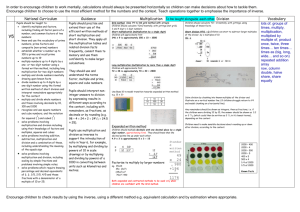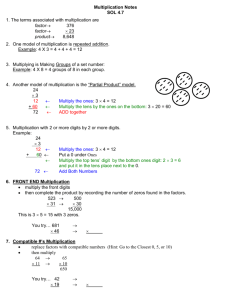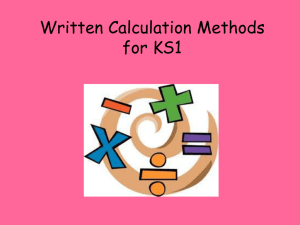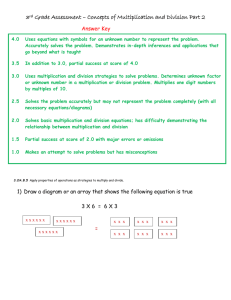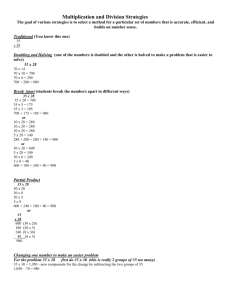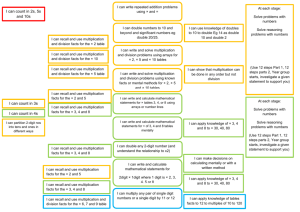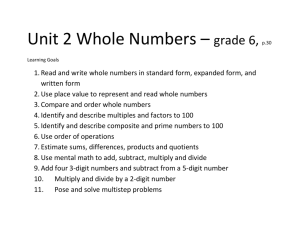Term 3
advertisement
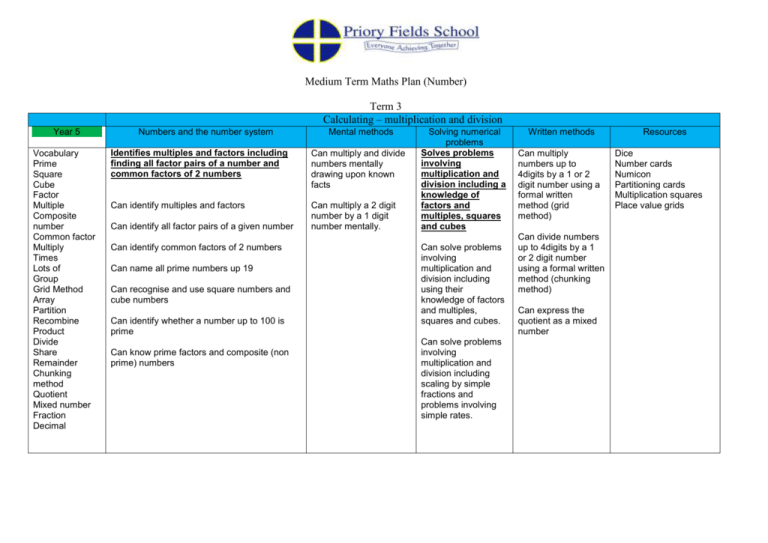
Medium Term Maths Plan (Number) Term 3 Calculating – multiplication and division Year 5 Vocabulary Prime Square Cube Factor Multiple Composite number Common factor Multiply Times Lots of Group Grid Method Array Partition Recombine Product Divide Share Remainder Chunking method Quotient Mixed number Fraction Decimal Numbers and the number system Mental methods Identifies multiples and factors including finding all factor pairs of a number and common factors of 2 numbers Can multiply and divide numbers mentally drawing upon known facts Can identify multiples and factors Can multiply a 2 digit number by a 1 digit number mentally. Can identify all factor pairs of a given number Can identify common factors of 2 numbers Can name all prime numbers up 19 Can recognise and use square numbers and cube numbers Can identify whether a number up to 100 is prime Can know prime factors and composite (non prime) numbers Solving numerical problems Solves problems involving multiplication and division including a knowledge of factors and multiples, squares and cubes Can solve problems involving multiplication and division including using their knowledge of factors and multiples, squares and cubes. Can solve problems involving multiplication and division including scaling by simple fractions and problems involving simple rates. Written methods Can multiply numbers up to 4digits by a 1 or 2 digit number using a formal written method (grid method) Can divide numbers up to 4digits by a 1 or 2 digit number using a formal written method (chunking method) Can express the quotient as a mixed number Resources Dice Number cards Numicon Partitioning cards Multiplication squares Place value grids Medium Term Maths Plan (Topic) Term 3 Statistics Year 5 Vocabulary Discrete data Continuous data Line graph Bar chart Grouped data Interval Mode Range Median Block graph Frequency table Tally chart Coordinates Quadrant Horizontal Vertical X axis Y axis Origin Processing and representing data Interpreting data Completes, reads and interprets information in tables including timetables Can interpret information in tables, including timetables. Can interpret continuous data in a line graph. Can complete discrete data and record in a bar graph Can interpret discrete data in a bar graph Can complete continuous data and record in a line graph Can solve comparison, sum and difference problems using information presented in a line graph. E.g. Can interpret the scale on a bar or line graph. Can draw and use a conversion graph for pounds and euros Can decide upon an appropriate scale for a line graph or bar graph Can complete and read information in tables, including timetables. Can read and plot coordinates in the first quadrant. Can read, plot and interpret coordinates in all 4 quadrants. Can read and plot coordinates in the first quadrant. Can read and plot coordinates in all 4 quadrants. Resources Data loggers Multilink cubes Teacher bar graph (SEN)


